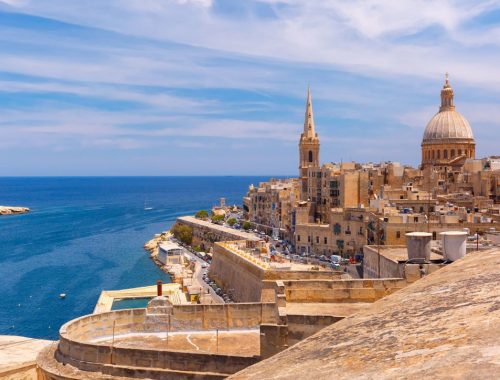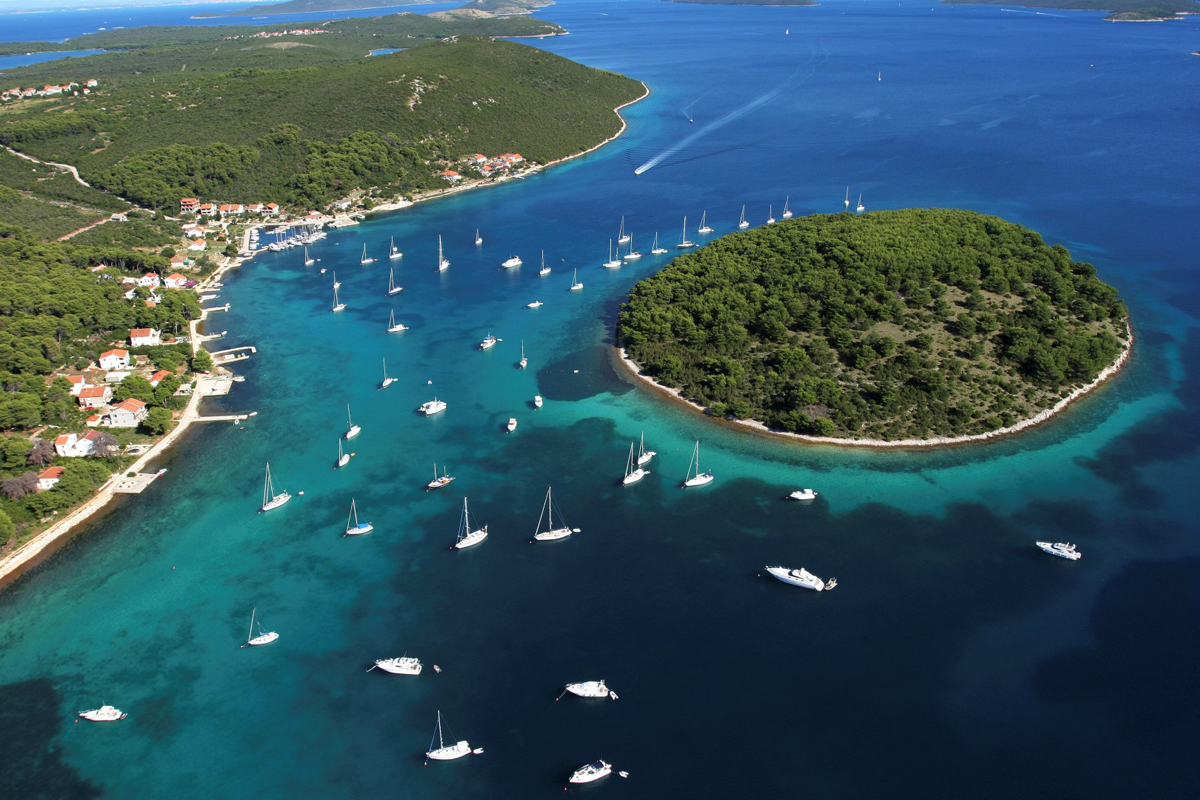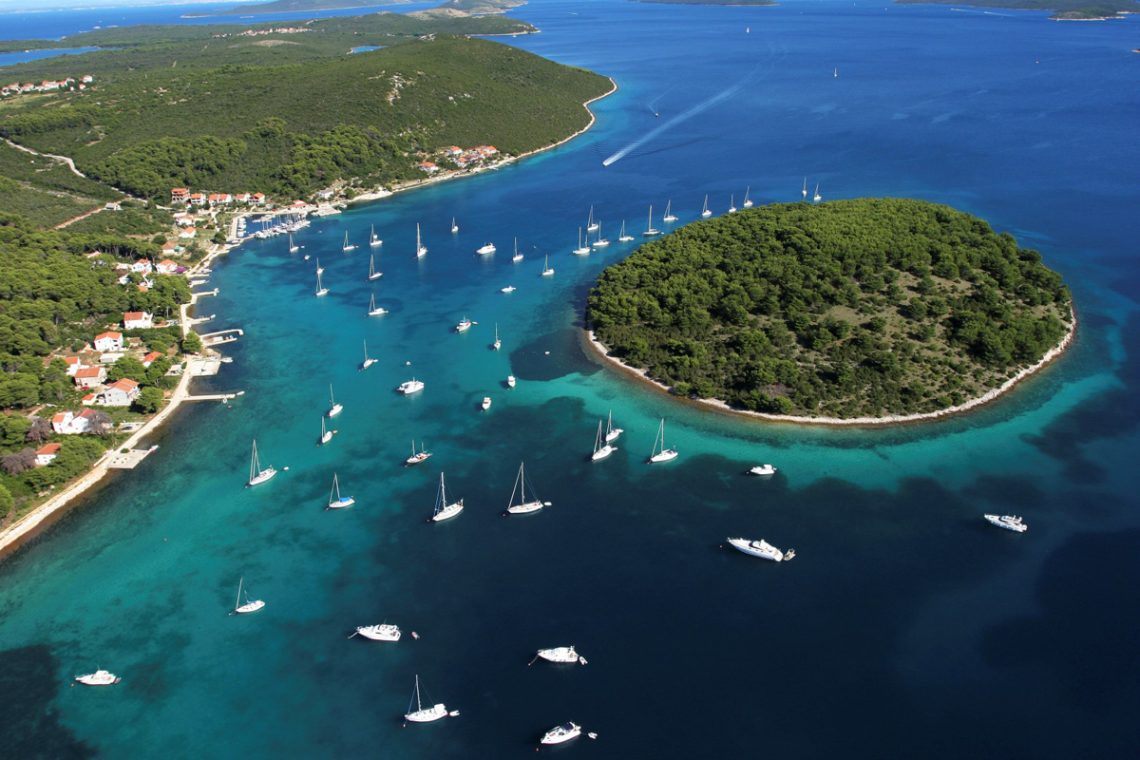
Sailing among the quiet and green islands of central Croatia
A 7-day sailing cruise in central Croatia is the perfect way to explore secluded islands rich in history, old fishing villages surrounded by greenery, and pebble beaches overlooking crystal-clear waters.
Central Croatia definitely offers some of the most unique and enchanting scenery in the Mediterranean. This is thanks to a coastline that stretches into a series of mostly elongated islands covered in lush greenery. The archipelagos around Zadar extend all the way to Lošinj and down to the northern part of the Kvarner Gulf. These magical places are marked by rich nature, pine and oak forests, as well as secluded bays and hidden pebble and sandy beaches. Most notably, there are old fishing towns that unexpectedly rise amid archaeological ruins, small churches and the homes of former sea captains.
It’s the perfect backdrop for a 7-day sailing cruise that departs from Sukošan, taking you to explore Muline, the islands of Molat and Ilovik, Silba, Olib, Lošinj and Dugi Otok. These destinations, experienced from the sea, leave a lasting impression in your heart and become unforgettable memories.
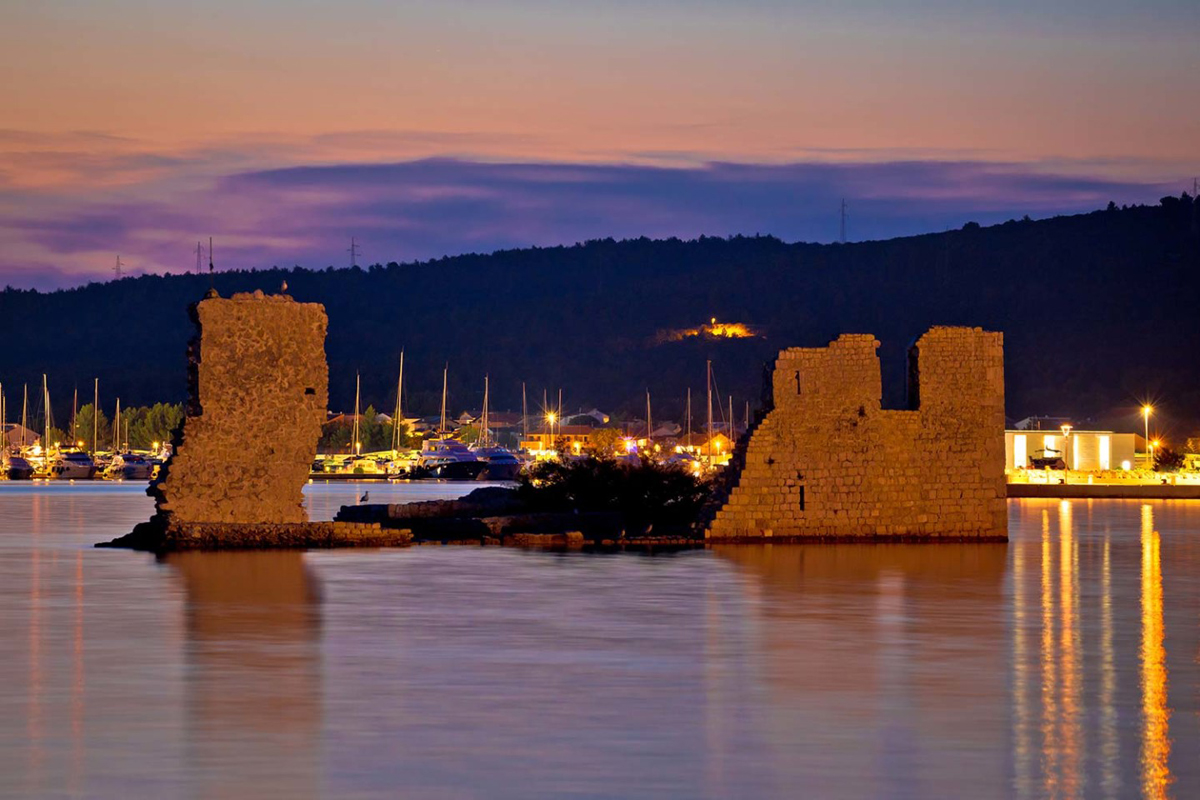
Day 1, Sukošan, boarding
The starting point for our cruise in central Croatia is the charming village of Sukošan, better known to Italians as “San Cassiano.” Located about 4 miles south of the city of Zadar, it sits on the wide Zlatna Luka bay, which, with its crystal-clear waters, has become a true paradise for sailors. This is thanks in part to the Dalmacija marina, one of the largest tourist marinas in Croatia. In addition to its unmistakable Mediterranean style, Sukošan is also famous for its beautiful beaches, all featuring a mix of sand and pebbles and shallow waters. The most well-known beach is Dječji raj, which means “children’s paradise,” due to its excellent accessibility. Equally stunning are D-Marin, located near the port, and Zlatna Luka, surrounded by tamarisks and pine trees, along with the more upscale Makarska.
As soon as you leave the port, the village welcomes visitors with its peaceful atmosphere and numerous alleys that reveal stone remnants from its ancient history. Don’t miss the Church of Our Lady of Graces, known for its unique decorations and the a cappella singing that echoes through its aisles, and especially the Church of San Cassiano, which, alongside its bell tower, holds many legends about its patron saint. Also intriguing is the summer residence of the bishop, the Palac from the 15th century, whose ruins lie on an islet in the middle of the bay.
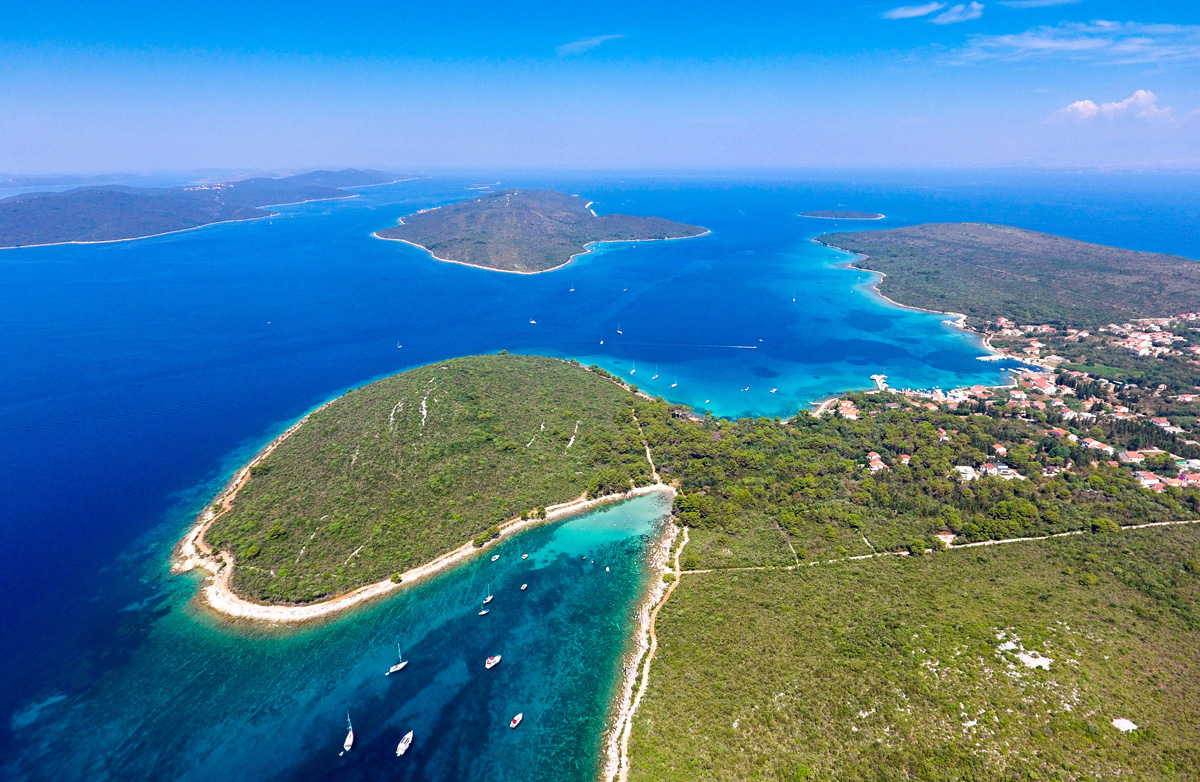
Day 2, Sukošan – Muline, 12 miles
Ready to set off, we head towards Muline, a sleepy little village perfect for relaxation located on the western side of Ugljan Island. The port itself offers a sense of tranquility. Where the Romans once docked their ships, today there’s just a handful of sailors, a few fishing boats tied up, and a couple of taverns where you can unwind in the shade and enjoy the catch of the day or a slice of cake. With only about fifty residents living there permanently, Muline is a peaceful spot. However, the village is surrounded by stunning rugged coastline, featuring hidden coves, small terraced pebble beaches, and spectacular cliffs shaded by pine trees.
One of the best ways to explore this area is by hopping on a bike and pedaling along fields of olive trees, vineyards, and fig trees toward one of the many natural beaches on the western side of the village. Each of these beaches offers fantastic snorkeling, which is one of the greatest joys in Muline: the water is so clear it feels like you’re flying, and the seabed is rich with marine life.
Not far from the village, a must-visit is the Roman villa. It’s one of the best-preserved examples of a classic Roman “rustic villa” in the Mediterranean, used here for olive harvesting, complete with a mill and oil press.
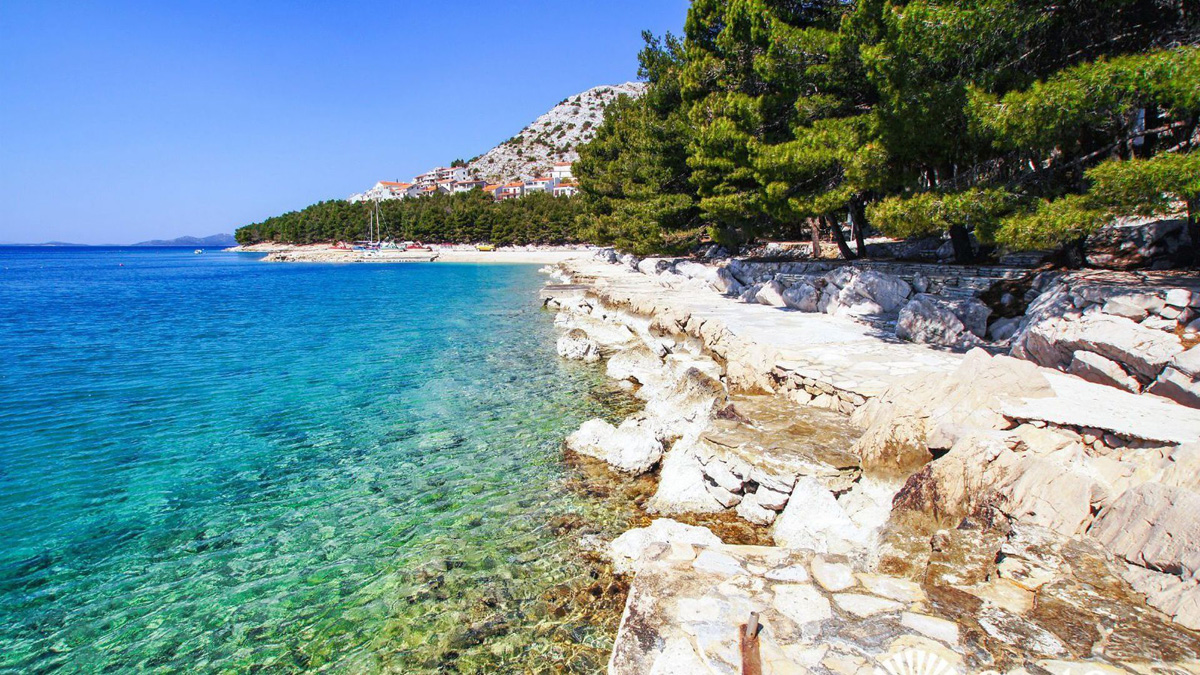
Day 3, Muline – Zapuntel, 14 miles
We’re leaving the docks and setting off again, heading to Zapuntel on the island of Molat. The port is overlooked by a charming village perched on a hill and is sheltered from all winds. However, reaching it requires careful navigation; you need to study the map and pay attention to the islets, rocks and shallows. The deepest part of the Zapuntel Strait reaches 20-30 meters in the center, but strong currents can hit speeds of up to 3 knots. Once you get in, you can dock at the main pier, where the water depth is about 3.5 meters, making sure to avoid the area at the head of the pier where the ferry docks. Alternatively, there are plenty of moorings in the stunning bay of Mljake.
After securing the boat, taking a walk up to the village offers a breathtaking view. In front of Zapuntel, you can see the island of Ist, which, along with Molat, Premuda, Skarda, Dugi Otok, Ugljan and Pasman, is part of the Zadar Archipelago. Ist appears to be two islands connected by a narrow strip of flat land, with two marine “valleys” on either side: Kosirica and Siroka.
Sailing in Central Croatia is a delight. Zapuntel is also linked to the other towns on Molat by a scenic road that runs through the heart of the island, crossing valleys and fields where you can soak in the lush natural beauty. Enjoy the sight of flower-covered fields dotted with butterflies, rosemary bushes, and the occasional flock of sheep. For those who appreciate peace and quiet, this destination, where concrete and noise haven’t yet arrived, is a true haven.
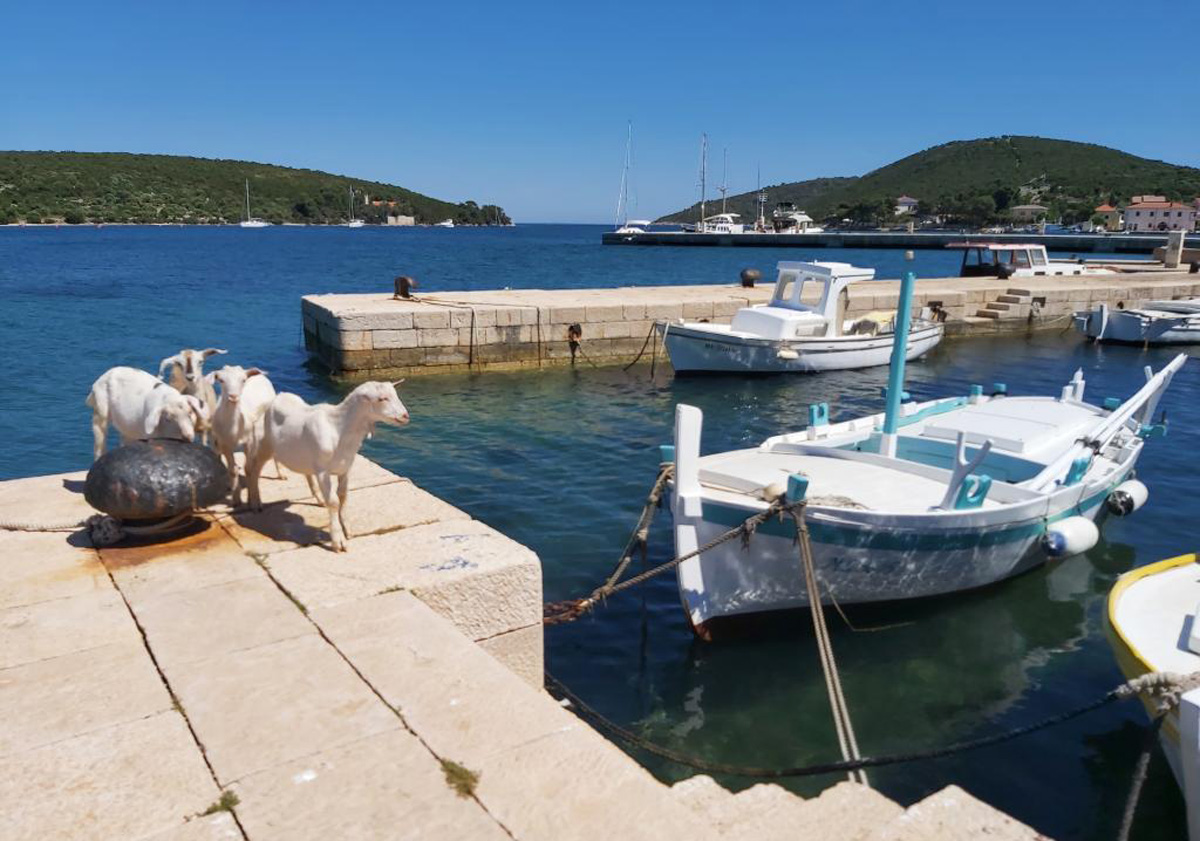
Day 4, Zapuntel – Ilovik, 14 miles
Let’s continue our cruise as we sail towards the island of Ilovik and try to dock in the southeastern part, where the coastline is lower and easily accessible. This is where the only settlement on the island is located, a charming old fishing village that sits across from the bay of Skracina. The local port is protected from northeastern winds by the nearby island of St. Peter. On land, you’ll find a well-stocked market, a post office, a bakery, a pastry shop, and just a couple of restaurants. However, the village is particularly lovely, with most of the houses facing away from bad weather and the Bora wind.
Ilovik is a true paradise for hikers who want to explore unspoiled territory, whether on foot or by bike, among the holm oaks, Aleppo pines, oleanders, eucalyptus trees, and fruit trees, including figs, plums, almonds, and pomegranates.
Pure Mediterranean vegetation surrounds you, especially concentrated on the peaks of the Dida and Krisine mountains and the slopes of Mount Vele Straze, where you can find the remains of dry stone walls from a Bronze Age fortress built to control and defend an important trade route. Because of its rich flora, Ilovik is also known as “the island of flowers.” In addition to the many donkeys that are characteristic of the island and the horses, some ostriches have also been introduced recently.
For snorkeling enthusiasts, there’s plenty to enjoy as well, with vibrant underwater life among the Posidonia seagrass and colorful fish. All the beaches have shallow waters just a few meters from the shore. One of the most popular bays is Parzine, which is connected to the village by a road, as well as Parknu beach, where you can find a World War II bunker.
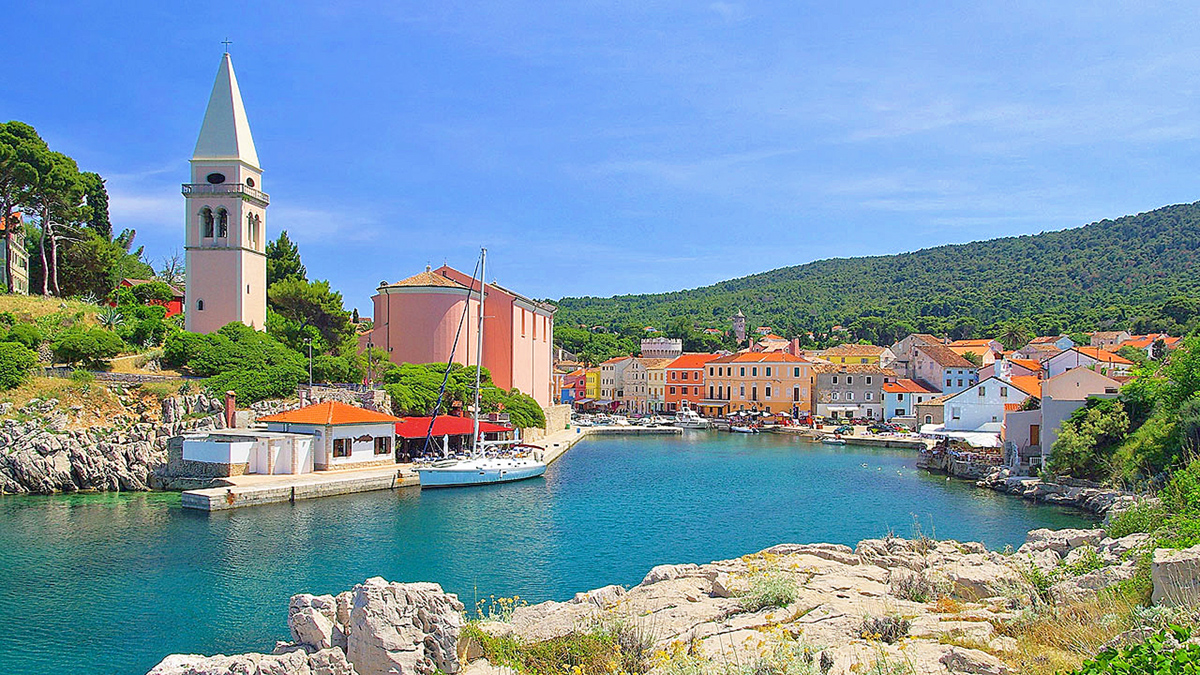
Day 5, Ilovik – Mali Lošinj, 10 miles
On the fifth day of our cruise through central Croatia, we set sail to reach Mali Lošinj, known in Italian as “Lussinpiccolo,” the largest town on the southern side of Lošinj Island. Approaching from the sea, Mali Lošinj is a true marvel. The town sits in the Augusta Bay facing west, with its Mediterranean-style houses nestled among green hills, forming a horseshoe shape around the well-protected harbor. The town offers various shops, plenty of restaurants, and a fish market where you can buy the freshest fish, along with delightful pastry shops, bars, and gelato places lining the waterfront.
Along the promenade, you’ll find impressive 19th-century mansions built by local sea captains. Even with the summer tourist crowds, the historic district manages to retain its charm and atmosphere. Just outside the town, on the sandy and pebble beaches between Sunčana Uvala and Čikat, you can admire ancient villas and luxury hotels that were once the homes of the wealthy elite from Vienna and Budapest, who came here to enjoy the fresh sea air.
A spectacular waterfront
Other beaches where you can relax and swim include Veli Zal, located in Suncana Bay, which has beautiful white pebbles and overlooks a stretch of crystal-clear sea. You can also check out Borik, Valdarke, Kadin, Bojcic, Silver Bay, and Gold Bay. Close to Mali Losinj, you should visit the fishing village of San Marino. For those who enjoy hiking or biking, we recommend the seaside path that connects the towns of Mali Losinj and Veli Losinj. It features narrow, winding stone-paved streets that lead to Rovenska Bay, known for its long breakwater, lovely beach and colorful houses.
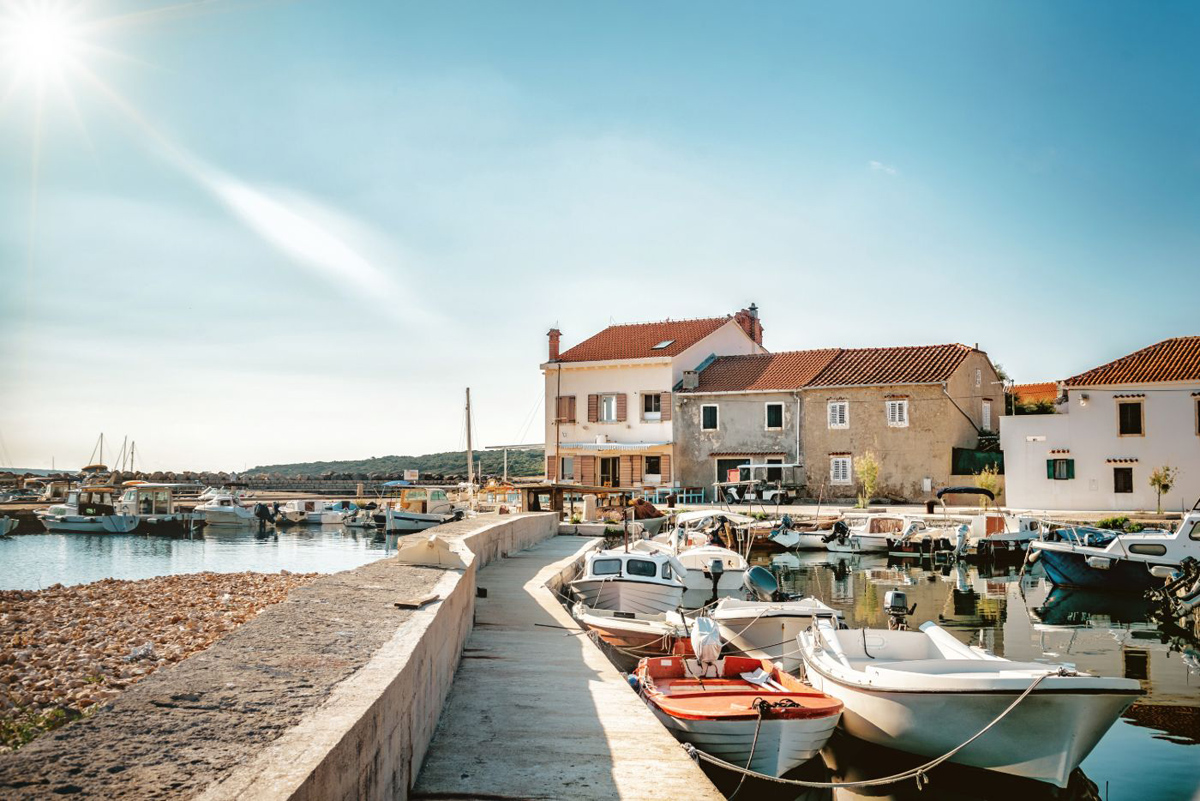
Day 6, Mali Lošinj – Silba/Olib, 15 miles
Time to set off to Silba, one of the most beloved islands in central Croatia, located in the northwestern part of the Kvarner archipelago. It’s a magical place with no hotels or cars, where unspoiled nature still reigns supreme. Residents get around on small tractors that supply the local shops. Known as the “Gateway to Dalmatia,” the island is green and lush—a truly enchanting paradise.
Silba is also the name of the only village on the island, featuring ancient houses once owned by sea captains, which tell the story of its rich past. The romantic atmosphere peaks at the famous Marinić Tower, which stands in the heart of the island, wrapped in a spiral staircase and surrounded by a garden. It’s also called the “Tower of Love,” as it’s linked to a legendary love story passed down through generations, which is even carved into its entrance. Those who climb the tower can enjoy breathtaking views from its observation platform or an irresistible sunset.
Just 3.2 miles away from Silba lies another charming little Croatian island worth visiting: Olib. While Silba is known as the island of captains, Olib is more of a working island. The local economy is based on agriculture and the trade of local products like fish, wine, olive oil and cheese. Despite its long history dating back to Roman times, life here remains simple and is likely to stay that way due to the lack of fresh water sources. It’s an ideal spot for nature lovers and those seeking peace and quiet. Perfect places to relax and swim include Slatinica Bay and Šotorišće Bay.
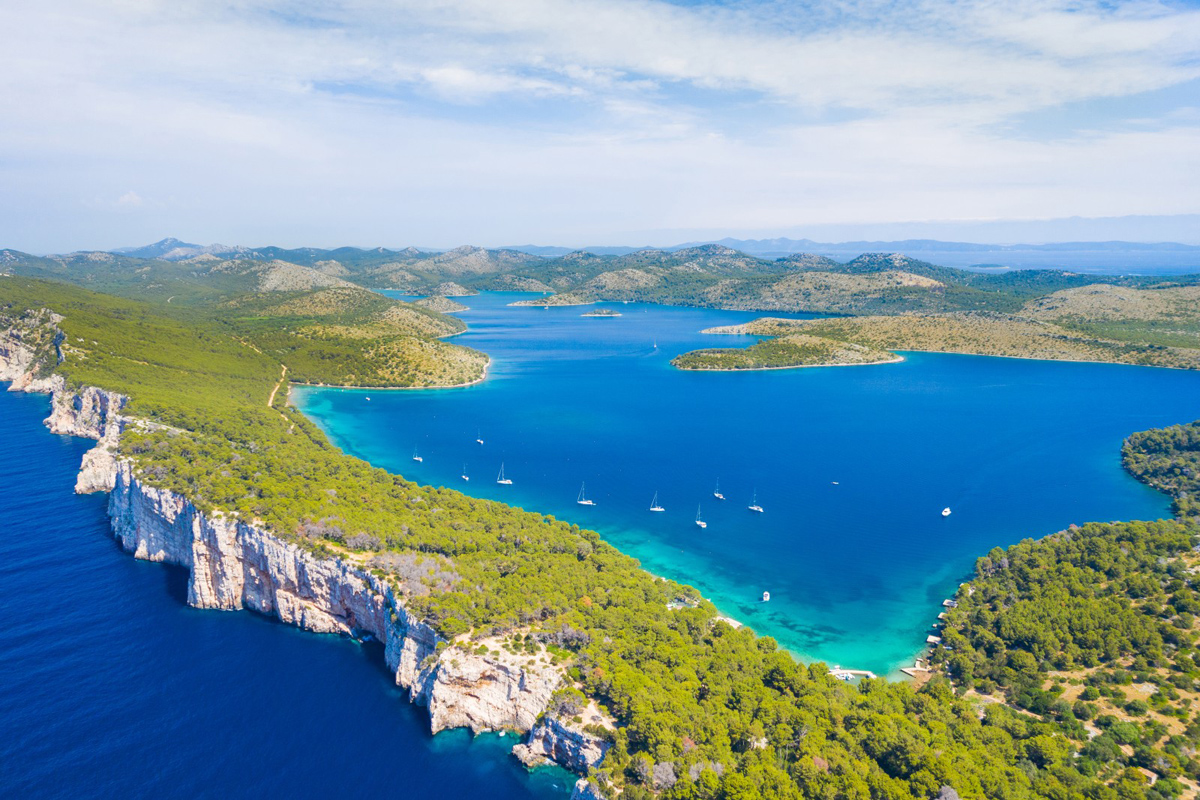
Day 7, Silba/Olib – Veli Rat – Sukošan, 40 miles
Before heading back to our starting point on this cruise in Central Croatia, we’re taking the last day to explore Veli Rat, a village located on the island of Dugi Otok, which means ‘long island.’ It’s a fitting name for this stretch of land that measures just 53 km and is filled with fragrant Mediterranean shrubland and a saltwater lake. One of its most popular attractions is the beautiful lighthouse perched on a promontory to the northwest. The 40-meter tall tower stands guard over the Settebocche Pass and was built in 1849.
By paying a modest fee to the caretaker who lives there with his family, you can climb a dizzying spiral staircase to the top of the lighthouse. The view is amazing, and if you look west, you can still see the wrecks of ships that have run aground in the shallow waters over the years. Around the lighthouse, there are also some stunning pebble bays and cliffs overlooking intensely blue, shallow waters where groups of diving enthusiasts enjoy exploring.
A marina full of services
The village of Veli Rat is located about 3 kilometers from the promontory with the lighthouse, connected by a long paved road that eventually winds through a pine forest before overlooking Cuna Bay. Here, you’ll find a marina that’s open year-round with 110 berths, as well as small docks that serve both as beaches and moorings for private boats. There are also two excellent restaurants and a small market.
The rest of the island’s coastline offers beaches for everyone, accessible by car, on foot and especially by boat. Some of the most popular ones include Sakarun and Lopata, along with the coastline facing the open sea on the opposite side of Dragove, known as Veli Zal.
Don’t miss Pantera Bay, with its sandy bottoms and pine trees that almost reach the sea. It’s also worth visiting the Strasna Pec cave, or “terrifying furnace,” which was recently opened to the public and equipped with eco-friendly lights and metal ladders.
You May Also Like
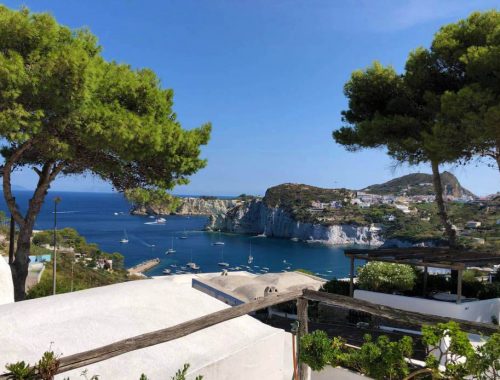
Sailing to the Pontine islands, the garden of the Mediterranean
08/11/2021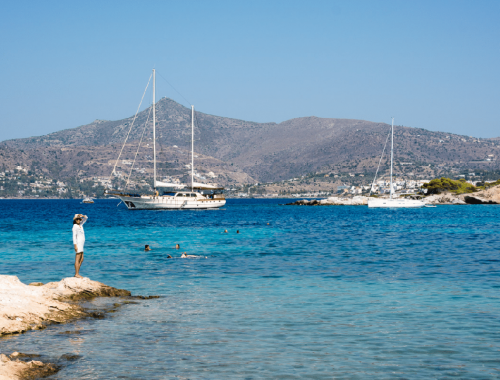
Saronic Gulf: sailing in Greece in complete relaxation
25/11/2021